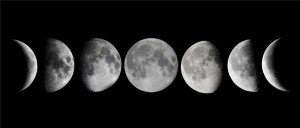In a world dominated by electronic timing devices- phones, watches, computers, iPods, etc.- the concept of an internal clock seems somewhat irrelevant. Today, our body clocks are often shrouded by the ubiquitous presence of artificial timepieces. In fact, many people fail to acknowledge any sort of connection between our internal clocks “and the rhythmic cycles of nature– the dawn and dusk, the lengthening days and shortening nights reversing as autumn and winter draw in; the waxing and waning of the moon and the rising and falling of the tide” (Rhythms 10). However, those assumptions are not correct. In fact, almost every bodily function, from toothaches to blood pressure, is in sync the light and dark cycle. This synchronization is referred to as circadian rhythm, meaning “about a day.” Functioning as somewhat of an internal agenda, circadian rhythms keep vital processes separated and scheduled for a specific time of the day in order to “[stop] everything from happening all at once” (Foster 11). In addition to the strict schedule, circadian rhythms dictate when performance of certain tasks is optimal, from reading a book to giving birth to a child.
Although scientists are still struggling to find out exactly how the internal clock functions, they have discovered that the circadian cycle operates independently of, yet in harmony with, the night and day cycle. In order to remain viable and functioning, organisms must have a way to “anticipate the coming sunset and sunrise” on their own. The cutting-edge experiments of Jean Jacques Ortous de Mairan proved that the stiffening and wilting of the mimosa plant leaves operates on a 24-hour cycle regardless of the presence or absence of light.
CITATIONS
Foster, Russell G. and Leon Kreitzman. Rhythms of Life: The Biological Clocks that Control the Daily Lives of Every Living Thing. New Haven, Yale University: 2005. Print.
Link to Jean Jacques Ortous de Marian article:

